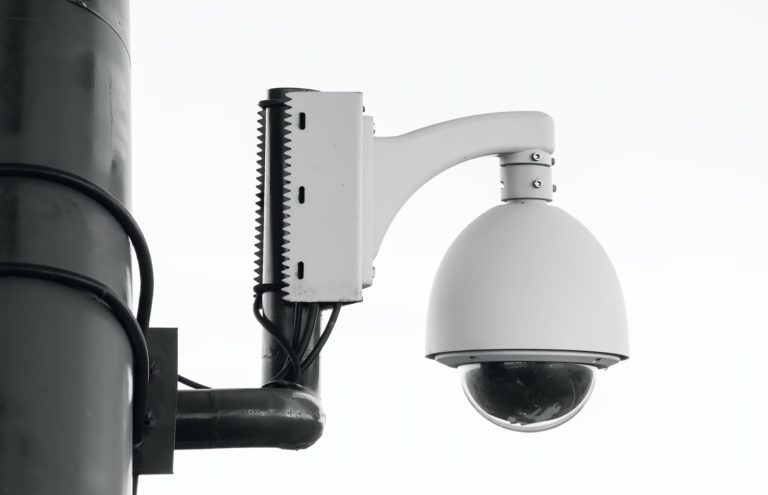In an era where security threats are becoming more sophisticated, it is crucial for businesses and organizations to prioritize the safety of their buildings. Implementing effective access control strategies is an essential step towards ensuring the protection of valuable assets, confidential information, and the well-being of employees and visitors.
1. Revise Operation Hours in Access System
Aligning the operation hour policies allows for better coordination with other safety measures, such as regular sanitization of common areas and implementation of health screenings. This comprehensive approach ensures a safer environment for employees, visitors, and customers alike.
By implementing a revised access system, we can also enhance the efficiency of security personnel. With designated operation hours, security staff can focus their attention on monitoring and managing access during peak times, reducing the risk of oversight or potential security threats.
Moreover, the revised operation hours provide an opportunity to optimize resource allocation. By analyzing the patterns of building usage, we can allocate staff and resources accordingly, ensuring that the necessary support is available during high-demand periods while minimizing costs during low-demand periods.
Communication is key during these changes. It is important to inform all stakeholders, including employees, tenants, and visitors, about the revised operation hours. Clear and timely communication will help manage expectations and ensure a smooth transition to the new access system.
Additionally, it is essential to regularly review and update the operation hours based on the evolving COVID-19 situation and any new policies or regulations. Flexibility and adaptability are crucial in navigating these uncertain times, and by staying informed and proactive, we can continue to prioritize the safety and security of everyone involved.
2. Audit Access Privileges for Enhanced Security
Regularly auditing access privileges is a critical component of maintaining a secure building environment. By conducting periodic reviews, organizations can identify and eliminate any unnecessary access permissions, reducing the chances of unauthorized access and potential security threats.
When it comes to ensuring the security of a building, access control is of utmost importance. Access control systems are designed to regulate who can enter specific areas and at what times. These systems often rely on access privileges, which determine the level of access granted to individuals or groups.
However, access privileges can become outdated or misconfigured over time, posing a significant security risk. For example, an employee who has changed roles or left the organization may still have access to certain areas or sensitive information. This can lead to unauthorized access or data breaches.
By conducting regular audits of access privileges, organizations can proactively identify and address any potential security vulnerabilities. During these audits, access permissions are reviewed and evaluated to ensure they align with the current needs of the organization and its employees.
During the audit process, organizations should consider various factors, such as job roles, departmental changes, and employee turnover. This comprehensive evaluation helps identify any discrepancies or inconsistencies in access privileges, allowing organizations to take corrective actions promptly.
Furthermore, auditing access privileges can also help organizations comply with industry regulations and standards. Many regulatory frameworks, such as the Payment Card Industry Data Security Standard (PCI DSS) and the Health Insurance Portability and Accountability Act (HIPAA), require organizations to regularly review and update access privileges to protect sensitive data.
Implementing a robust access control policy is not a one-time task but an ongoing process. Regularly auditing access privileges ensures that the organization’s security measures remain effective and up-to-date. It also demonstrates a commitment to maintaining a secure environment for employees, visitors, and valuable assets.
In conclusion, auditing access privileges is a crucial step in enhancing security within a building environment. By conducting regular reviews, organizations can identify and address any potential security vulnerabilities, reducing the risk of unauthorized access and data breaches. It is an ongoing process that requires careful evaluation and alignment with industry regulations to ensure the highest level of security.
3. Update and Maintain Access Control Software Regularly
To stay ahead of evolving security threats, it is essential to update and maintain access control software regularly. This includes installing the latest patches, firmware updates, and security enhancements. By keeping the software up-to-date, organizations can ensure that their access control system remains robust and protected against potential vulnerabilities.
Regularly updating and maintaining access control software is crucial for maintaining the security and integrity of an organization’s access control system. With the constant advancements in technology, hackers and cybercriminals are always finding new ways to exploit vulnerabilities in software. Therefore, it is imperative for organizations to stay vigilant and proactive in protecting their access control systems.
Updating access control software involves installing the latest patches and updates released by the software vendor. These updates often address known security vulnerabilities and provide additional layers of protection. By regularly applying these updates, organizations can ensure that their access control system is equipped with the latest security features and defenses.
In addition to patches and updates, firmware updates are also essential for maintaining the security of access control systems. Firmware is the software embedded in the hardware devices that make up the access control system, such as card readers and controllers. Firmware updates often include bug fixes, performance improvements, and security enhancements. By regularly updating the firmware, organizations can ensure that their access control system operates efficiently and securely.
Furthermore, access control software vendors continuously work on improving the security of their products. They regularly release security enhancements that address emerging threats and vulnerabilities. These enhancements may include new authentication methods, encryption algorithms, or additional security features. By keeping the access control software up-to-date, organizations can benefit from these security enhancements and stay one step ahead of potential attackers.
It is worth noting that updating and maintaining access control software should be done in a controlled and systematic manner. Organizations should have a well-defined process in place to test updates and patches before deploying them to the production environment. This ensures that the updates do not introduce any compatibility issues or unintended consequences that could disrupt the access control system’s functionality.
In conclusion, updating and maintaining access control software regularly is crucial for organizations to stay ahead of evolving security threats. By installing the latest patches, firmware updates, and security enhancements, organizations can ensure that their access control system remains robust and protected against potential vulnerabilities. With a proactive approach to software maintenance, organizations can effectively safeguard their access control systems and maintain the security of their premises and assets.
4. Ensure Controlled Entry: Limit Primary Building Entrances
Limiting the number of primary entrances to a building can significantly enhance security. By consolidating access points and ensuring controlled entry, organizations can effectively monitor and manage the flow of individuals in and out of the premises. This not only reduces the risk of unauthorized entry but also facilitates efficient visitor management.
5. Install Door Contacts on All Exterior Doors for Better Monitoring
Installing door contacts on all exterior doors provides an additional layer of security by enabling real-time monitoring of entry and exit events. These contacts can be integrated with the access control system, allowing for immediate notifications in the event of unauthorized access attempts or suspicious activities. This proactive approach enhances overall building security.
6. Custom Alerts for Sensitive Areas: A Step Towards Advanced Security
Designating sensitive areas within a building and setting up custom alerts for these locations can significantly enhance security measures. By creating specific notifications for restricted areas or high-security zones, organizations can ensure that any unauthorized access attempts are immediately detected and addressed, minimizing the potential risks associated with these areas.
7. Removing Non-Entrance Door Hardware for Improved Safety
Eliminating non-entrance door hardware, such as handles or knobs, on doors that are not intended for primary access can enhance building safety. This measure discourages individuals from attempting to enter the building through unauthorized means, improving overall security by reinforcing the importance of designated entry points.
8. Secure Your Facility by Collecting Spare and Master Keys
Collecting and securely storing spare and master keys is an essential practice for maintaining building security. Organizations should implement strict protocols for key management, ensuring that only authorized personnel have access to these keys. Additionally, tracking key usage and maintaining a clear record can help identify any potential security breaches and prevent unauthorized duplication of keys.
9. Routine Checks on Mechanical Door Hardware for Reliable Security
Regular inspections and maintenance of mechanical door hardware are crucial for reliable security. This includes checking door locks, hinges, and other components to ensure they are functioning as intended. Identifying and promptly addressing any issues or malfunctions minimizes the risk of compromised access control and strengthens overall building security.
10. Eliminate Door Props to Secure Exterior Access Points
Door props, such as wedges or stoppers, pose a significant security risk by allowing doors to remain open, providing unauthorized individuals with easy access to the building. Eliminating door props and implementing policies to discourage their use is an effective way to secure exterior access points and prevent potential security breaches.
In conclusion, enhancing building security through cost-effective access control strategies is crucial for organizations to safeguard their assets, maintain confidentiality, and protect the well-being of their personnel. By implementing these ten strategies, businesses and organizations can significantly strengthen their access control systems and mitigate potential security threats.






